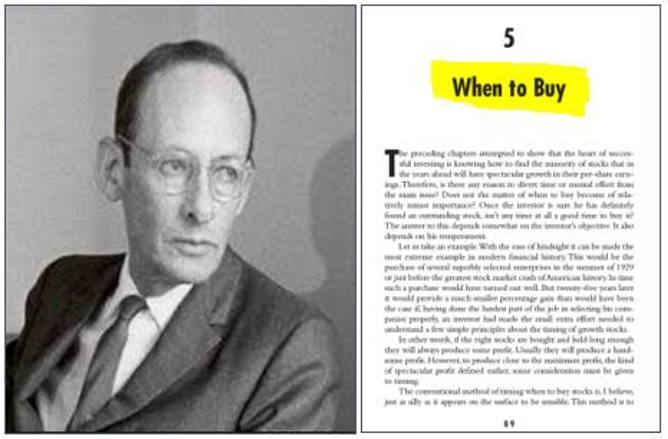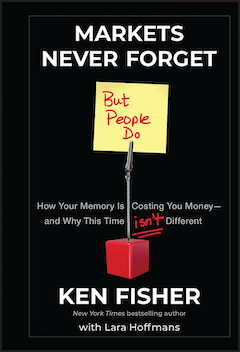By Philip Fisher, Nov/1958 (288p.)
Phil Fisher began his investing career in 1928, after he dropped out of the newly-created Stanford Graduate School of Business to work as an investment analyst at Anglo-London Bank in San Francisco. Three years and two jobs later, he started Fisher & Company, at the bottom of the depression and six years before T. Rowe Price was founded. Fisher managed money until his retirement in 1999 at the age of 91, and is said to have made his clients very rich. Even after he became famous though, he rarely gave interviews. He published Common Stocks and Uncommon Profits in 1958, and it became the first investment book to ever make The New York Times Bestseller list. If what we practice at Victori were a religion, this book would be our Bible.
The following passage, from the ending pages of Chapter 5: When to Buy, is one of my favorites. Take note that even back then, it was mostly about Tech!

“Many investors are not in the happy position of having a backlog of well-chosen investments bought comfortably below present prices. Perhaps this may be the first time they have funds to invest. Perhaps they may have a portfolio of bonds or relatively static non-growth stocks which at long last they desire to convert into shares that in the future will show them more worthwhile gains. If such investors get possession of new funds or develop a desire to convert to growth stocks after a prolonged period of prosperity and many years of rising stock prices, should they, too, ignore the hazards of a possible business depression? Such an investor would not be in a very happy position if, later on, he realized he had committed all or most of his assets near the top of a long rise or just prior to a major decline. This does create a problem. However, the solution to this problem is not especially difficult—as in so many other things connected with the stock market it just requires an extra bit of patience. I believe investors in this group should start buying the appropriate type of common stocks just as soon as they feel sure they have located one or more of them. However, having made a start in this type of purchasing, they should stagger the timing of further buying. They should plan to allow several years before the final part of their available funds will have become invested. By so doing, if the market has a severe decline somewhere in this period, they will still have purchasing power available to take advantage of such a decline. If no decline occurs and they have properly selected their earlier purchases, they should have at least a few substantial gains on such holdings. This would provide a cushion so that if a severe decline happened to occur at the worst possible time for them—which would be just after the final part of their funds had become fully invested—the gains on the earlier purchases should largely, if not entirely, offset the declines on the more recent ones. No severe loss of original capital would therefore be involved.
There is an equally important reason why investors who have not already obtained a record of satisfactory investments, and who have enough funds to be able to stagger their purchases should do so. This is that such investors will have had a practical demonstration, prior to using up all their funds, that they or their advisors are sufficient masters of investment technique to operate with reasonable efficiency. In the event that such a record had not been attained, at least all of an investor’s assets would not be committed before he had had a warning signal to revise his investment technique or to get someone else to handle such matters for him.
All types of common stock investors might well keep one basic thought in mind; otherwise the financial community’s constant worry about and preoccupation with the danger of downswings in the business cycle will paralyze much worthwhile investment action. This thought is that here in the mid-twentieth century the current phase of the business cycle is but one of at least five powerful forces. All of these forces, either by influencing mass psychology or by direct economic operation, can have an extremely powerful influence on the general level of stock prices. The other four influences are the trend of interest rates, the over-all governmental attitude toward investment and private enterprise, the long-range trend to more and more inflation, and—possibly most powerful of all—new inventions and techniques as they affect old industries. These forces are seldom all pulling stock prices in the same direction at the same time. Nor is any one of them necessarily going to be of vastly greater importance than any other for long periods of time. So complex and diverse are these influences that the safest course to follow will be the one that at first glance appears to be the most risky. This is to take investment action when matters you know about a specific company appear to warrant such action. Be undeterred by fears or hopes based on conjectures, or conclusions based on surmises.”
– Phil Fisher, 1958.
Best,
Adriano










